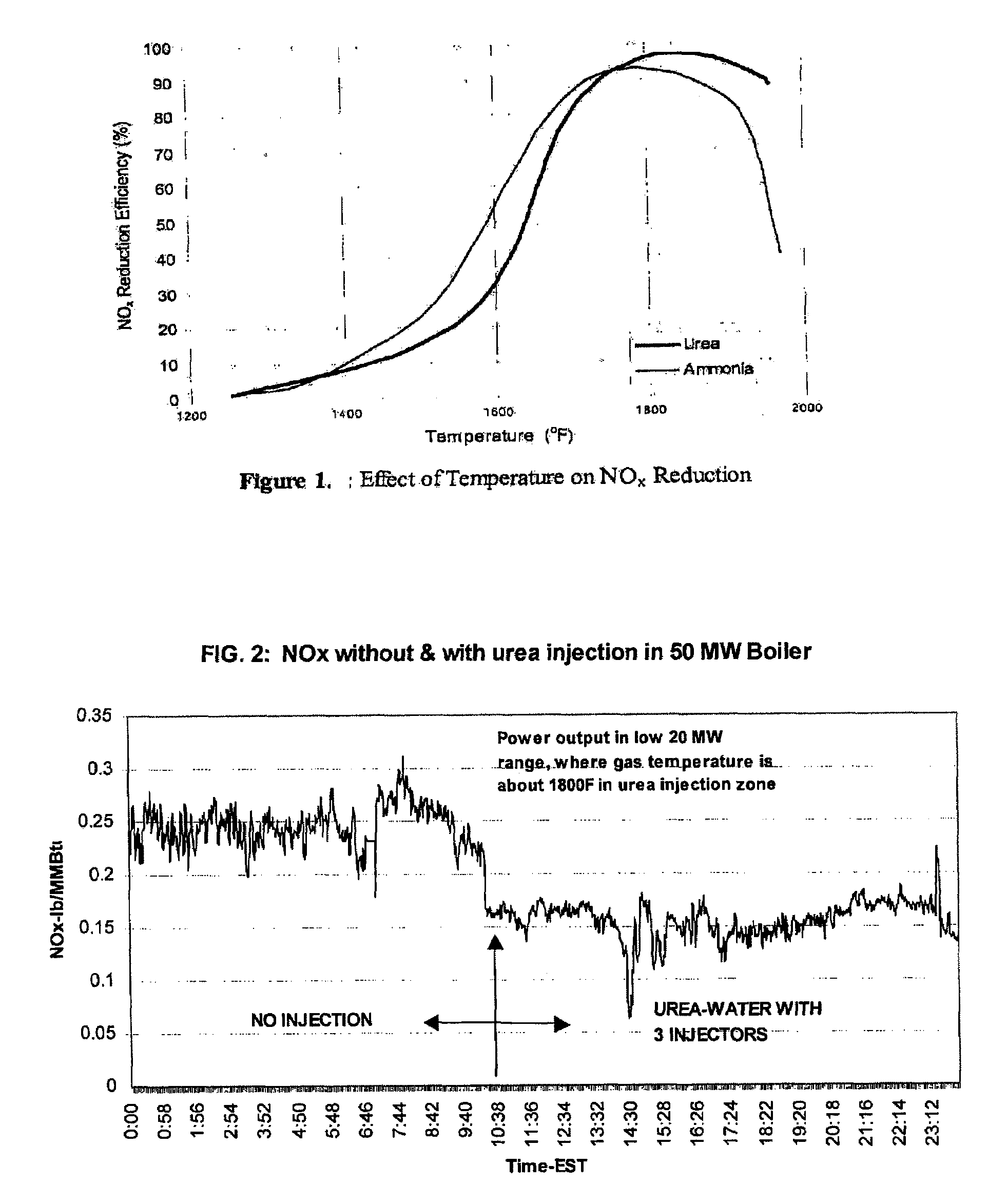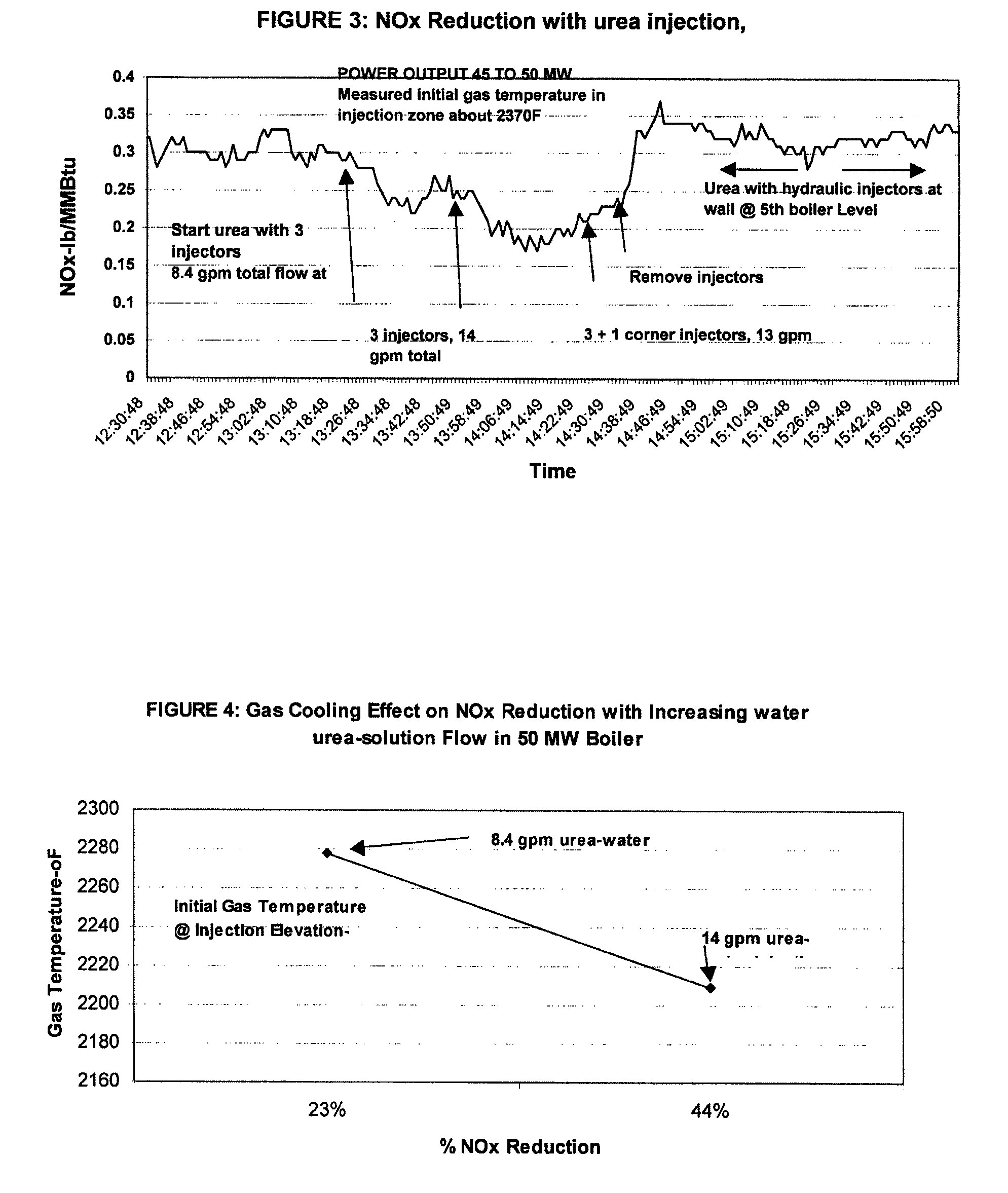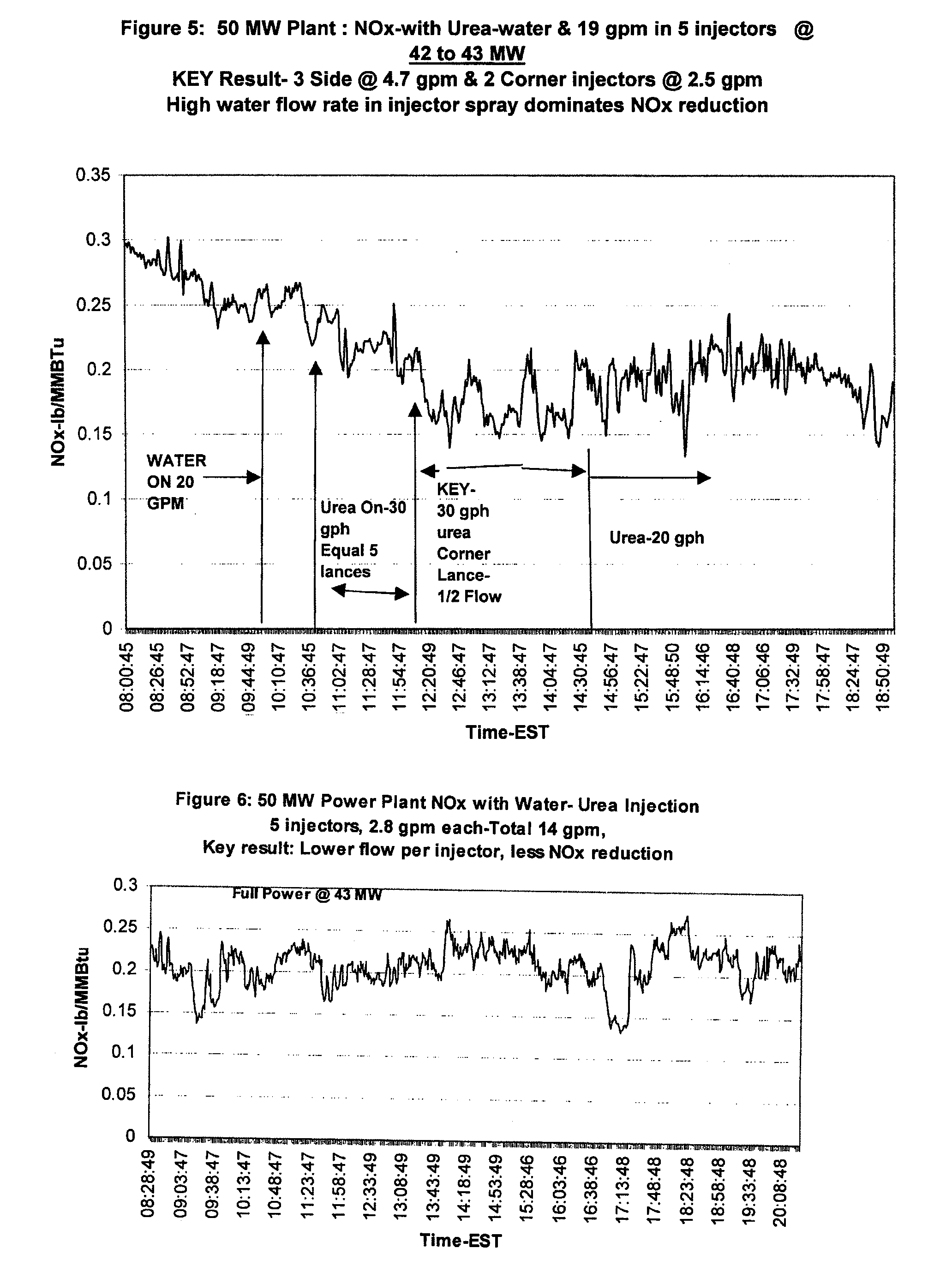Optimizing post-combustion nitrogen oxide and sulfur dioxide reductions and improving combustion efficiency in coal fired boilers
a technology of nitrogen oxide and sulfur dioxide, which is applied in the direction of electrostatic separation, hydrogen sulfides, solid removal, etc., can solve the problems of inconvenient process, financial risk of sunk, and almost totally in consumable costs, so as to achieve low capital cost, high capital cost, and low capital cost
- Summary
- Abstract
- Description
- Claims
- Application Information
AI Technical Summary
Benefits of technology
Problems solved by technology
Method used
Image
Examples
Embodiment Construction
[0035]A method for complete combustion of a carbonaceous fuel, low volatile matter, low sulfur coal, in a primary combustion zone of a boiler or furnace operating at about 3000° F. gas temperature and near to or at stoichiometric condition of unity in order to increase combustion efficiency and nitrogen oxide, NOx, concentrations, while reducing carbon dioxide, CO2, and sulfur dioxide, SO2, concentrations in the primary combustion zone below levels attainable with more fuel rich combustion and higher sulfur coal, comprising: identifying a post-primary combustion zone within the boiler or furnace having gas temperatures between about 1700° F. to 2500° F.; injecting an aqueous urea or ammonia solution as dispersed air atomized droplets of varying diameters across a planar spray pattern perpendicular to gas flow direction for reducing NOx to at least 0.3 lb / MMBtu; if required to augment the aqueous urea or ammonia solution to achieve the reduction of the NOx, injecting in the post-prim...
PUM
| Property | Measurement | Unit |
|---|---|---|
| gas temperatures | aaaaa | aaaaa |
| temperatures | aaaaa | aaaaa |
| diameter | aaaaa | aaaaa |
Abstract
Description
Claims
Application Information
 Login to View More
Login to View More - R&D
- Intellectual Property
- Life Sciences
- Materials
- Tech Scout
- Unparalleled Data Quality
- Higher Quality Content
- 60% Fewer Hallucinations
Browse by: Latest US Patents, China's latest patents, Technical Efficacy Thesaurus, Application Domain, Technology Topic, Popular Technical Reports.
© 2025 PatSnap. All rights reserved.Legal|Privacy policy|Modern Slavery Act Transparency Statement|Sitemap|About US| Contact US: help@patsnap.com



